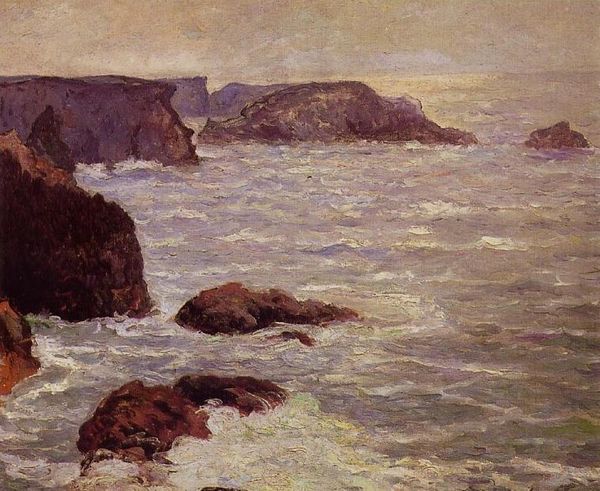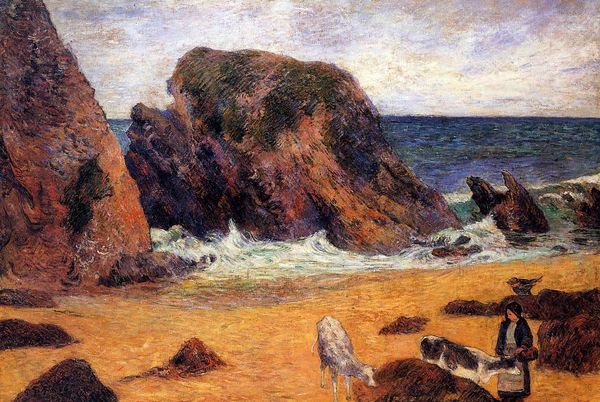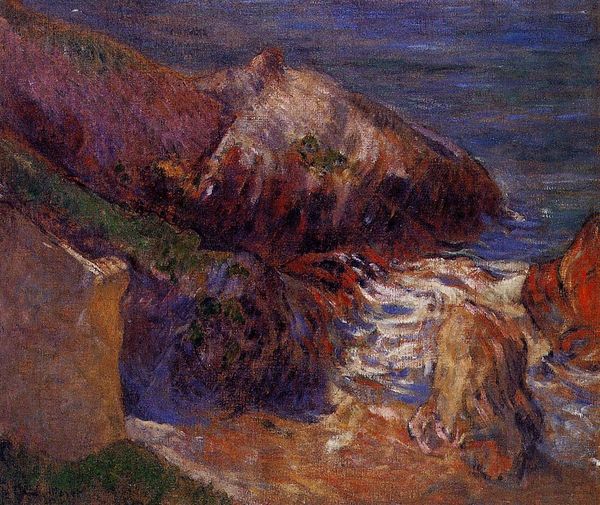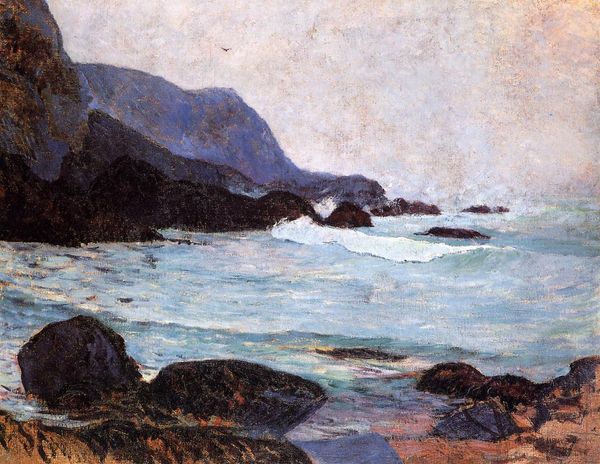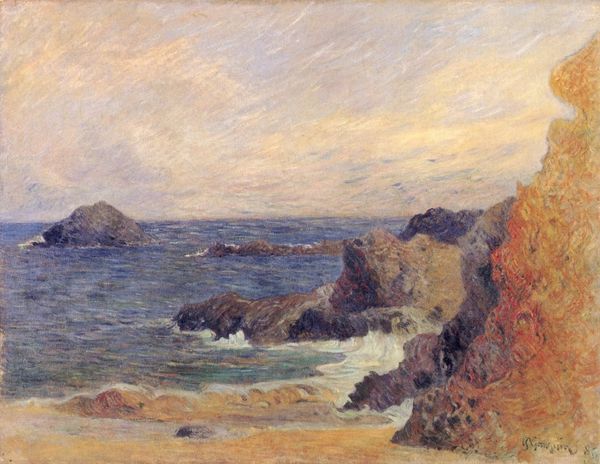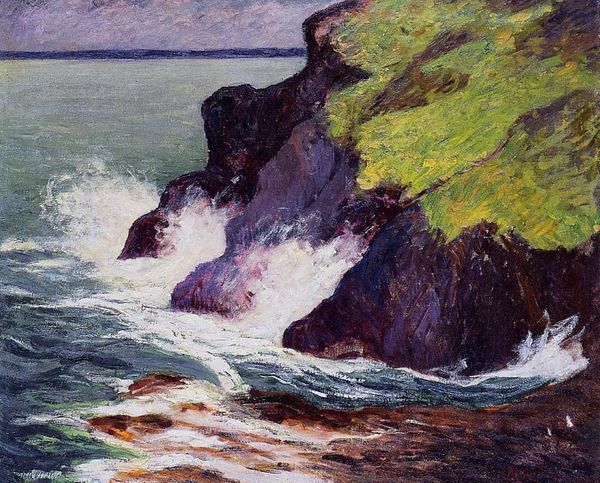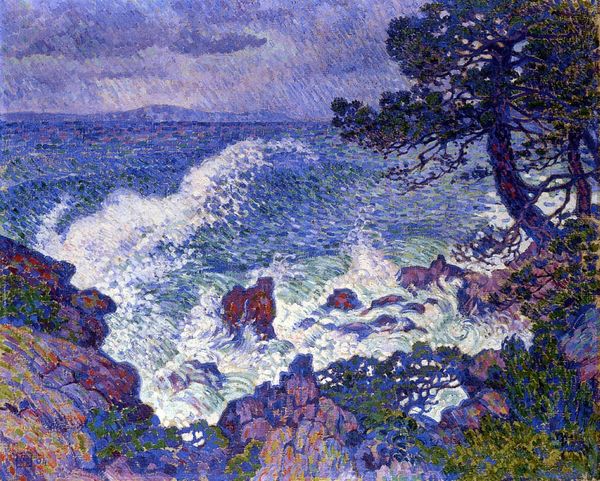
plein-air, oil-paint
#
sky
#
cliff
#
impressionism
#
plein-air
#
oil-paint
#
landscape
#
impressionist landscape
#
oil painting
#
ocean
#
rock
#
seascape
#
natural-landscape
#
realism
#
sea
Copyright: Public domain
Curator: Looking at this painting, one immediately notes its vibrancy. It's Maxime Maufra’s "The Red Rocks at Belle Ile." Editor: The redness really grabs you, doesn't it? I'm struck by the sheer texture, all those visible brushstrokes. You can almost feel the roughness of the rocks and the movement of the water. Curator: Maufra, like many of his contemporaries, was drawn to the coastal regions, but he was more interested in capturing the transient effects of light and atmosphere on the landscape. It reflects the growth of tourism and leisure at the turn of the century. The democratization of travel facilitated through advancements in train transportation permitted easier mobility of middle and upper classes. Editor: I think it’s interesting to think about plein-air painting and labor, in Maufra's case, hauling equipment to remote spots on Belle Ile. There is labor involved in the making. But what about the fishermen and dock workers on the coasts in that period? Their labor certainly shaped Maufra’s imagery as well. Curator: Absolutely. The artistic interest in rugged coastal regions mirrors broader social trends, reflecting on the changing relationship between people and the environment and this is not only shown through art, as tourist industries arose during this period of French history as well. Editor: What stands out is that the artist seemed to build up the rocks with these thick layers of oil paint, making the textures more vivid, creating a stark contrast to the smoothness of the sea surrounding them. You sense the weight and mass, it has such volume. It’s very evocative of the artist’s hand and craft, especially compared to today's world of digital creations and perfect surfaces. Curator: Yes, the appeal comes from this visceral engagement of the painting, its connection to place and the moment, and how that reflects the changing perspectives of landscape art toward industry. Editor: It prompts consideration on where this canvas was made and where these oil paints were bought. Everything comes from somewhere! Curator: A perfect painting for today’s discussion. Thanks for your insights! Editor: Indeed, an insightful observation!
Comments
No comments
Be the first to comment and join the conversation on the ultimate creative platform.

